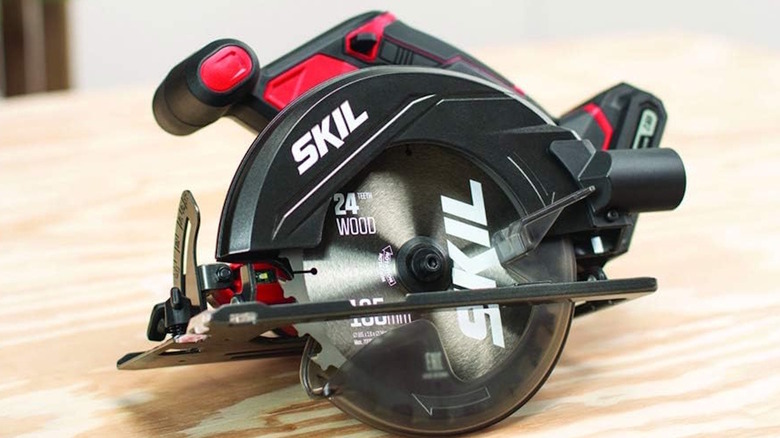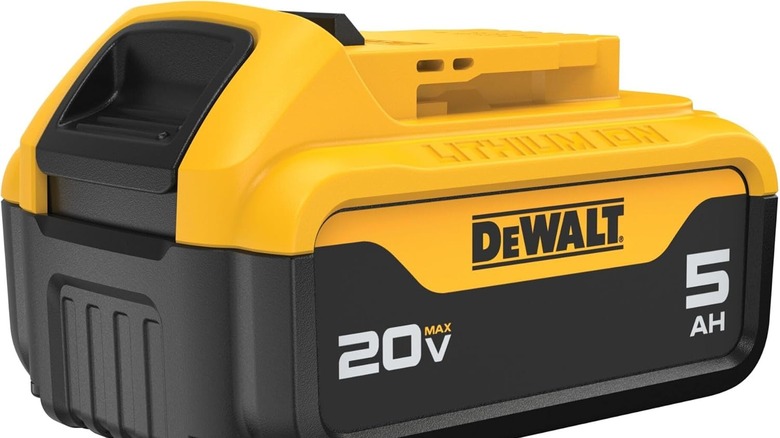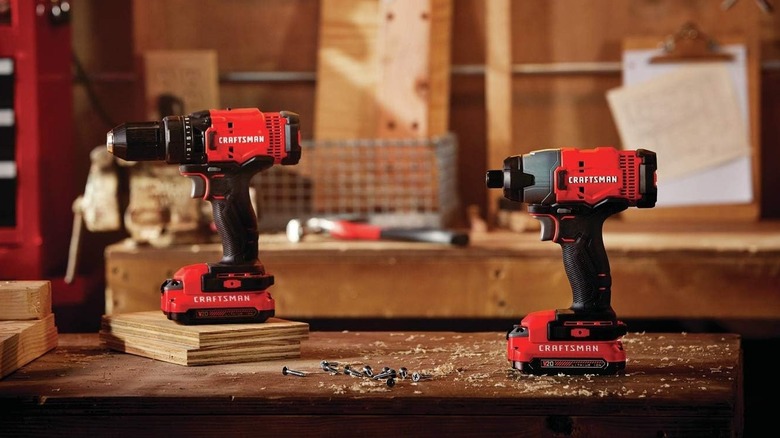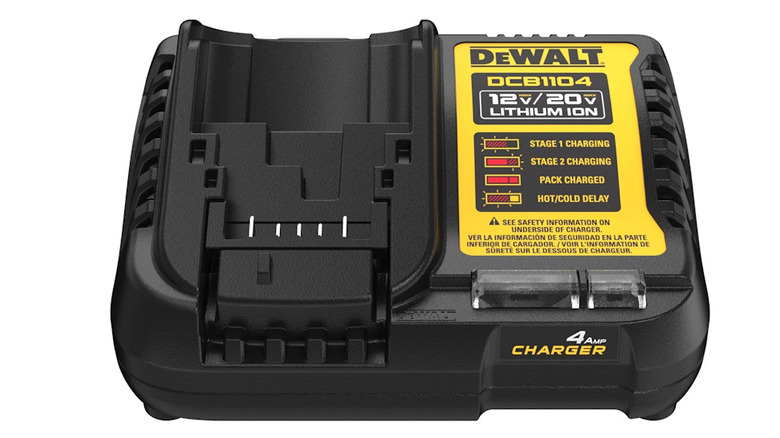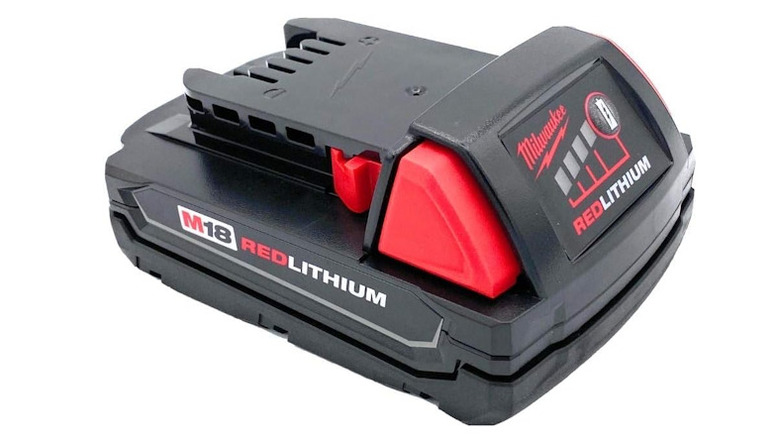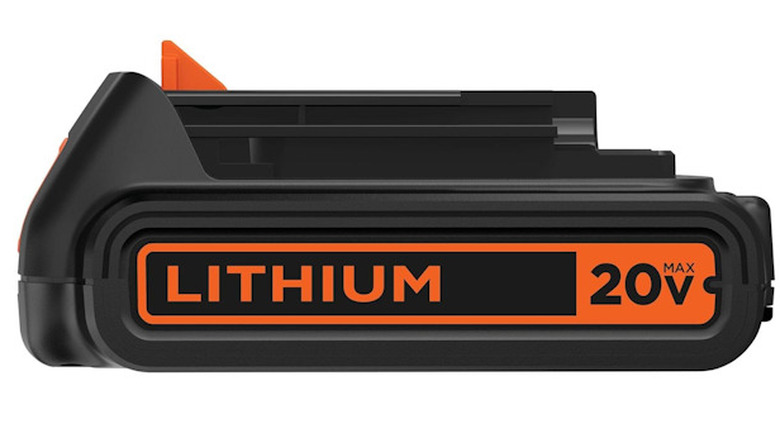5 Things To Look Out For When Buying Power Tool Batteries
We may receive a commission on purchases made from links.
When shopping for a battery for your power tool, knowing what to look for or which one you should get can be challenging. Each brand has significant differences, such as learning about the differences between the DeWalt and Milwaukee batteries. There are a lot of terms you want to tackle, and it's also a good idea to learn about the power tool you're using or want to use. If you haven't picked one up yet, we have a complete list ranking every major power tool brand.
We want to make it easier to figure out what battery you should get for your power tools. We're covering the five biggest questions about what you want to look for before you purchase a power tool battery. These answers should offer you more confidence when buying a battery for any of your power tools, and you can learn more about how getting an effective battery brings out the best qualities for your equipment.
Is it a name brand?
There are several types of power tool batteries available for you to purchase, and it might be tempting to grab a generic model from a third-party company if you're on a budget. However, when it comes to keeping your power tool safe and optimizing how it draws power from a battery, going with a name brand is the best method. If you can, stick with the same manufacturer for the power tool, as these typically work better with each other.
A fair amount of risk comes with using an off-brand battery, even if you use an adapter that is not recommended. These are designed to work with multiple types of power tools, rather than the one you're using, and the components may not function well with yours. The manufacturer behind the third-party brand might also not use the same components as another, as there's a chance they could be using alternatives to lower the overall price of the battery. Although you save money in the short run with this purchase, the components could harm your power tool, forcing you to get a new one sooner than expected. Even though you're paying more, a name-brand product could save you a lot of money in the long run.
How often are you using the tools?
A good question to ask yourself is how often you're planning to use a power tool. Do you regularly start projects at your house? Is this a power tool you frequently use to perform repairs or maintenance on your property? Depending on the frequency you're using your power tools, that tells you how much you should spend on getting these batteries and what else you'll want to get.
Purchasing more than one battery is a good idea for those who repeatedly use power tools. Getting a charging station that can house multiple batteries could also be worth the investment. While you're actively using a battery with your power tool during a project, another can be in the station, waiting for you to swap it out when your current one runs out. Grabbing multiple batteries also helps if you have several power tools from the same brand, as these batteries are typically interchangeable. You may also want to purchase the more expensive batteries with the higher amp-hour (Ah), or get a faster charging station, like the best ones we have listed for Ryobi. If you don't use your power tools often, buying fewer batteries and a slower charging station will save you money.
How much voltage and Ah do you need?
Before you commit to what battery you're getting for your power tool, it's good to understand the required voltage it needs to work. Every cordless power tool needs a set amount of power to run effectively, and if the battery you get goes below or is above that requirement, things can get dangerous. You want to buy a battery with the same voltage as your power tool, avoiding the chance of your equipment not working effectively, overheating, or malfunctioning when you're using it. The voltage needs to match, even if the battery is the same manufacturer brand as your power tool.
After determining the voltage, the next choice is to consider the Ah. A battery's Ah shows how much charge it can carry, as a higher Ah means it can remain in use for longer. However, a larger Ah means the battery is heavier, and that could cause a power tool to become unwieldy or difficult for you to hold. If you only plan to use your power tool a couple of times during a project, a smaller Ah is fine, as the smaller ones also save you money.
Have you read customer reviews?
Another thing to consider whenever you want to pick up a new battery is to read through the customer reviews available on a website. Not every experience shared by a user who's purchased a product before you has the same experience, but it could offer valuable insight into the quality and performance before you make a purchase. When there are significantly more positive reviews than negative, you can feel more confident about getting the item and it working correctly when it gets to you. A customer review also has a significant impact on products showing up earlier on an Amazon page, if you're doing all your shopping online.
For example, the DeWalt 20-Volt Max Battery two-pack and charger offer has 1,832 reviews, with a 4.8-star rating on Amazon, and 88% of the reviews are five-stars. You can learn a lot by browsing through what customers have shared regarding their experience. You may also want to read the one-star reviews to understand why customers disliked a product. These issues could boil down to something the manufacturer might not be able to control, such as arriving late, the product going missing during transit, or an item reaching a customer damaged.
Are you getting a NiCad or Lithium-ion battery?
A reasonable question you'll want to ask yourself is whether you plan to get a nickel-cadmium (NiCad) or a Lithium-ion battery. Some older power tools rely on NiCad batteries, and if you bought a new power tool but have an older battery, like one from Ryobi, it might not work with newer models.
Traditionally, NiCad batteries were a much more popular choice for several decades. For many, they were much more popular because they had high load performance, great shelf life, and they were available in a wide range of sizes. However, the cadmium in these batteries is considered toxic and not environmentally friendly. These batteries also suffer from a memory effect, forcing many to use them until they are completely dead before recharging them. Lithium batteries were released in the early 90s and have become a much more common sight. Lithium batteries are smaller and lighter, and they don't lose a charge if you don't use them for months, requiring low maintenance. However, they are a more expensive option, and they can be fragile as they need built-in safety features to ensure they don't short-circuit.
Unfortunately, more companies have phased out their NiCad batteries. As these products have become delisted, relying on Lithium battery options is likely the better choice.
